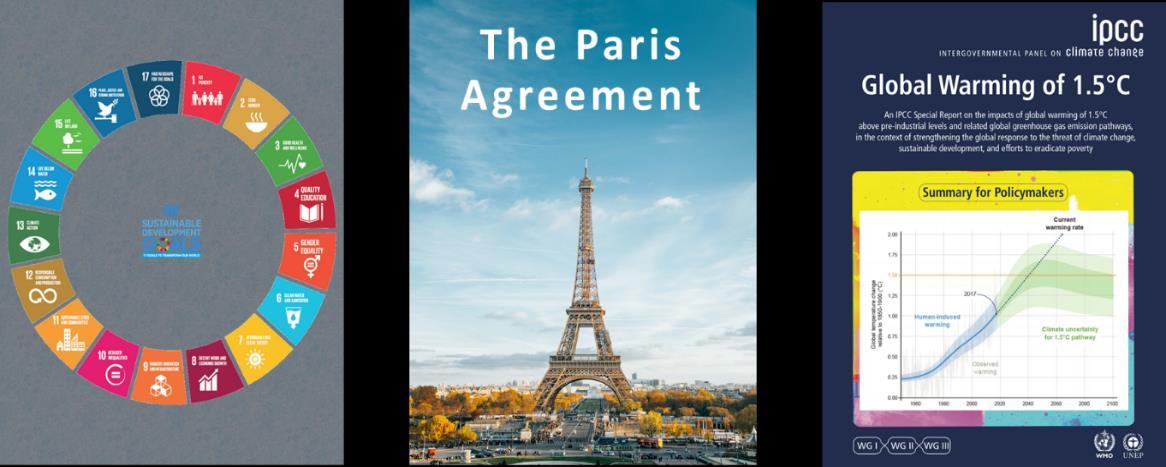
2 minute read
3.2 INTERNATIONAL DRIVERS FOR CLIMATE ACTION
Internationally, there are three primary drivers for urgent action on climate, additional to the second commitment period of the Kyoto Protocol from 2013 to 2020. These are:
1. Sustainable Development Goals (SDGs)
In 2015, countries adopted the 2030 Agenda for Sustainable Development and its 17 Sustainable Development Goals. Governments, businesses and civil society together with the United Nations are mobilising efforts to achieve the Sustainable Development Agenda by 20305. The SDGs came into force on 1 January 2016 and call on action from all countries to end all poverty and promote prosperity while protecting the planet.
2. Paris Agreement
To address climate change, countries adopted the Paris Agreement at the COP21 in Paris on 12 December 2015, referred to above. The Agreement entered into force less than a year later. In the agreement, signatory countries agreed to work to limit global temperature rise to well below 2°C, and given the grave risks, to strive for 1.5°C Celsius6 .
3. Special IPCC report on 1.5°C warming (SR15)
In October 2018 in Korea, governments approved the wording of a special report on limiting global warming to 1.5°C. The report indicates that achieving this would require rapid, farreaching and unprecedented changes in all aspects of society. With clear benefits to people and natural ecosystems, limiting global warming to 1.5°C compared to 2°C could go hand in hand with ensuring a more sustainable and equitable society7 .

FIGURE 7: GLOBAL CONTEXT FOR ACTION ON CLIMATE
The IPCC is currently in its sixth assessment report cycle (AR6), and their synthesis report is due to be released in 2022, which will bring together the latest science, evidence and projections for global warming. Recent reports, such as Climate Reality Check 20208, suggest that past warming projections
5 Sourced from https://www.un.org/sustainabledevelopment/development-agenda/ 6 Sourced from https://www.un.org/sustainabledevelopment/climatechange/ 7 Sourced from https://www.ipcc.ch/news_and_events/pr_181008_P48_spm.shtml 8 Sourced from https://www.climaterealitycheck.net/

and impacts by IPCC are already being exceeded, and that decarbonisation requires even more urgent effort and deeper and faster cuts to emissions than have been stated before.
In addition, the World Economic Forum’s Global Risks Report 20219 highlights adverse climate changerelated outcomes as among the most likely to occur with the highest impacts to the global economy. The chart below from the WEF’s report shows several key climate risks clustered in the top right corner; that is, these risks are assessed to be among the most likely to eventuate, with the greatest economic impact among all the global risks that were assessed.

FIGURE 8: GLOBAL RISKS REPORT 2021 – LIKELIHOOD AND IMPACT OF CLIMATE, OTHER RISKS TO GLOBAL ECONOMY
9 https://www.weforum.org/reports/the-global-risks-report-2021



